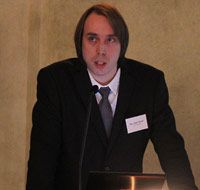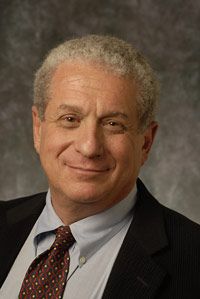Announcing Our New Fellows for 2013/2014
USC Shoah Foundation - The Institute for Visual History and Education is pleased to announce its Fellows for 2013/2014 academic year.
Four Teaching Fellows have been awarded to faculty members at universities that subscribe to the Visual History Archive (VHA). These fellows were selected based on the centrality of testimonies from the VHA to their course content. The awarded faculty will spend 10-15 hours in residence either at the Institute’s offices at the University of Southern California or with their local campus facilitator. They will also consult with Institute staff to be introduced to the archive and to receive specialized research assistance in preparing for their course. The Institute will post all the final course syllabi its website. The awarded fellows will also present their work at lectures on their campuses. The four fellows are:
Colin Keaveney (Assistant Professor of French at University of Southern California) - “Remembering Loss, Writing Memory.” Students will be asked to consider the different ways in which victims, survivors, their offspring and acquaintances, witnesses, public intellectuals, and writers have chosen to give voice and shape to the terrible events that have marked them.
Waitman Beorn (Louis and Frances Blumkin Professor of Holocaust and Genocide Studies and assistant professor of history at the University of Nebraska at Omaha) – “History of the Holocaust.” Students will identify and focus on one survivor’s journey through the Holocaust as a way of both personalizing and complicating the history of this period. Beorn will also revise the visualization project he assigns students, either conceptually or empirically, based on them including testimony from the VHA. Excerpts from past visualization projects can be found here.

Andrea Peto (Gender Studies at Central European University) – “Gender and the Holocaust.” The course will rely on students’ using VHA in the context of problematizing gendered perspectives on the Holocaust and creating a conceptual framework supported by the relevant theoretical background for their video project using IWitness, the Institute’s educational website.
Two Research Fellows were also announced for USC graduates students to incorporate the Visual History Archive into their research projects, dissertation’s or theses.
Lorry Aaron Black (PhD in Sacred Music) – “Music of the French and Dutch Transit Camps.” Will research and explore the musical and artistic culture that was fostered by the harsh conditions in the transit camps of France, Vichy France, and Holland.
Leticia Villasenor (PhD in French) – “Memory and Politics in Postwar France.” Will be exploring how survivors and witnesses interpret and elucidate the events that took place during the roundups in France as well as how these individual experiences of trauma are affected by filmic and literary interpretations.
